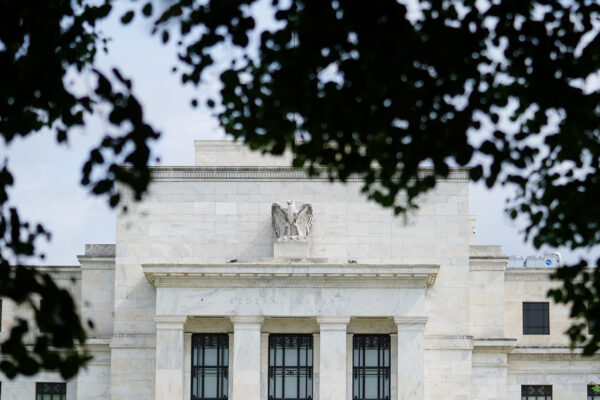The U.S. annual inflation rate slowed to 3 percent in June, down from 4 percent in May, according to the Bureau of Labor Statistics (BLS). This came in below the consensus estimate of 3.1 percent.
Annualized inflation has now fallen for 12 consecutive months and represented the lowest reading since March 2021. The notable easing of inflation has been driven by the significant baseline effect from last year when the spike in energy and food prices resulted in a 9.1 percent rate.
On a month-over-month basis, the consumer price index (CPI) edged up 0.2 percent, up from 0.1 percent and under the market forecast of 0.3 percent.
Core inflation, which excludes the volatile food and energy sectors, clocked in at 4.8 percent, down from 5.3 percent and under economists’ expectations of 5 percent. The core CPI also rose 0.2 percent, down from 0.4 percent, and below estimates of 0.3 percent.
Many of the year-over-year prints of the indexes have come down from high levels. But several CPI components have started rising month to month.
The energy index rose 0.6 percent, up from the 3.6 percent drop in May. Gasoline also surged 1 percent last month, up from a 5.6 percent drop in the previous month. Electricity also climbed 0.9 percent, up from the 1 percent decrease in May.
Energy has started trending higher again as U.S. crude oil prices remained around $70. Now that domestic oil costs have soared nearly 10 percent over the past month and firming above $75, the energy index could contribute more to next month’s CPI.
Growth in the food index has slowed significantly over the last 12 months, easing to 5.7 percent in June. Supermarket prices came in at 4.7 percent last month, while the food away from home sub-index remained elevated at 7.7 percent.
The slide has been largely attributed to the steep drop in agricultural commodities, with many of these crops trading in negative territory this year.
As many industry experts had warned, beef prices are beginning to increase, with sub-index increasing for four consecutive months, including a 1.6 percent jump in uncooked ground beef. This has been largely due to inventory levels tumbling and demand picking up.
Consumers are shelling out less for eggs as they have maintained their downward trajectory, plummeting 7.3 percent month-over-month in June.
Shelter costs continue to add to CPI pressures, inching 0.4 percent higher on a month-over-month basis. The shelter sub-index dipped to 7.8 percent year-over-year.
“The index for shelter was the largest contributor to the monthly all items increase, accounting for over 70 percent of the increase,” the BLS reported.
Looking ahead to the July CPI report, the Federal Reserve Bank of Cleveland’s Inflation Nowcasting model suggests that price pressures will pick up again. The annual inflation rate is expected to rise to 3.6 percent and the core CPI is forecast to remain stubborn at around 5.2 percent.
Meanwhile, consumer inflation expectations for the year ahead declined for the third straight month in June, easing to 3.8 percent, down from 4.1 percent in May, according to the New York Fed’s Survey of Consumer Expectations (SCE). This was the lowest reading since April 2021 and has tumbled considerably since the series high of 6.8 percent in June 2022. Expected price changes fell for food and gasoline, but rose for home prices, medical care, rent, and tuition.
The U.S. financial markets rallied in pre-market trading following the latest inflation data, with the leading benchmark indexes up as much as 1 percent.
U.S. Treasury yields are red across the board, with the benchmark 10-year yield down nearly 6 basis points to around 3.92 percent. The 2-year yield shed more than 11 basis points to 4.78 percent.
All Eyes on July FOMC Meeting
The futures market is penciling in a quarter-point rate hike at the July Federal Open Market Committee (FOMC) policy meeting, which would raise the target fed funds rate to 5.25 percent and 5.50 percent, according to the CME FedWatch Tool.
Investors think it is almost certain that the central bank will raise rates this month based on the June Summary of Economic Projections (SEP) (pdf) and various comments from Fed officials.
SEP data show that policymakers are forecasting two additional rate hikes this year, lifting the median policy rate to around 5.6 percent.
Moreover, officials have maintained a hawkish stance in public remarks, including Cleveland Fed Bank President Loretta Mester, who recently championed higher rates in a speech at the University of California–San Diego.

“Core measure indicates that inflation is stubbornly high and broad-based,” Ms. Mester said.
“In order to ensure that inflation is on a sustainable and timely path back to 2 percent, my view is that the funds rate will need to move up somewhat further from its current level and then hold there for a while as we accumulate more information on how the economy is evolving.”
But market analysts have warned that the Fed could risk overtightening and potentially harming the U.S. economy.
“We thought we were in the 9th inning of rate hikes and the game was about to be over, but it looks like we are going into extra innings of the tightening cycle,” said Ken Mahoney, the president of Mahoney Asset Management, in a research note. “The Fed has this ‘fetish’ of getting inflation down to their target of 2%, but it seems like that ship has certainly sailed and there will be a lot of destruction in the economy to get it to that target, so they have to weigh that risk of the unemployment rate going significantly higher.”
The central bank is failing to realize that inflation threats are diminishing as pandemic-era savings vanish and people return to the workforce, says Bryce Doty, the senior vice president of Sit Investment Associates.
“Inflation is crossing the critical level where it will be below the Fed funds rate which is an indication of an even more restrictive Fed policy than simply being higher than a 3% ‘neutral’ interest rate,” Mr. Doty wrote in a note.
In recent weeks, monetary policymakers have accepted that the economy is slowing but it is still resilient and performing better than expected. Current economic conditions have afforded them room to be slightly more aggressive on interest rates as the labor market remains tight and economic expansion continues.
“Most think there won’t be a recession this year, and many think that, even if demand slows down some more, a recession will be avoided or will be very mild,” Ms. Mester noted.
With inflation showing significant progress, could the Fed cut interest rates?
“Signs that the real economy is still headed for recession and more progress on bringing core inflation back toward the 2% target should eventually persuade the Fed to begin cutting rates again in the first half of next year,” said Paul Ashworth, the chief U.S. economist at Capital Economics, in a third-quarter economic outlook on July 12.
The FOMC will convene its two-day policy meeting on July 25 and 26.
From The Epoch Times


